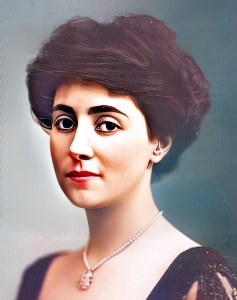 Norma Talmadge, born on May 2, 1894, in Jersey City, New Jersey, was a pioneering American actress who rose to prominence during the silent film era.
Norma Talmadge, born on May 2, 1894, in Jersey City, New Jersey, was a pioneering American actress who rose to prominence during the silent film era.
With a career spanning over three decades, Talmadge left an enduring impact on the burgeoning film industry, showcasing her versatility and captivating audiences with her emotive performances.
Raised in a show business family, with sisters Natalie and Constance, Talmadge entered the world of entertainment at a young age. Her early exposure to the theatrical arts set the stage for a remarkable career that would see her become one of the leading actresses of her time.
Talmadge’s journey into film began in 1910 when she signed with Vitagraph Studios. However, it was her move to the newly formed Triangle Film Corporation in 1915 that marked a turning point. Under Triangle, Talmadge gained recognition for her roles in films like “A Daughter of Two Worlds” (1915) and “The Battle Cry of Peace” (1915), establishing herself as a rising star.
In 1916, Talmadge joined forces with producer Joseph M. Schenck, whom she would later marry, and signed a contract with his production company. This collaboration proved immensely successful, catapulting Talmadge to new heights in the film industry. She became one of the highest-paid actresses of the silent era, a testament to her talent and box office appeal.
Known for her ability to convey a wide range of emotions on screen, Talmadge excelled in both dramatic and comedic roles. Her performances resonated with audiences, making her a beloved figure during a time when silent film actors communicated with viewers through nuanced expressions and gestures.
Talmadge’s filmography includes a string of successful features such as “Panthea” (1917), “The Forbidden City” (1918), and “Smilin’ Through” (1922). The latter film, directed by Sidney Franklin, showcased Talmadge’s dramatic prowess and became a significant milestone in her career. The success of “ A Tale of Two Cities” added another feather to Norma Talmadge’s cap, showcasing her adaptability in portraying a diverse range of characters.
As the film industry transitioned to sound, Talmadge faced the challenge of adapting to the new medium. While she made a successful transition, her career trajectory shifted, and she ultimately retired from acting after her final film, “Du Barry, Woman of Passion” (1930).
Beyond her on-screen accomplishments, Talmadge was known for her philanthropic efforts. She actively supported charitable causes, contributing to the war effort during World War I and later involving herself in various social causes.
Norma Talmadge’s influence extended beyond the United States; her films gained international acclaim, making her a global cinematic icon. Her impact on the silent film era endures as a testament to her talent and contribution to the evolving language of cinema.
In her later years, Talmadge maintained a relatively private life, focusing on her family and personal pursuits. She and Joseph Schenck divorced in 1934, and Talmadge remarried, finding contentment away from the spotlight.
Norma Talmadge’s legacy lives on as a trailblazing actress who navigated the transition from silent to sound cinema with grace and skill. Her contributions to the art of film, marked by a dedication to her craft and a commitment to philanthropy, have secured her a lasting place in the annals of Hollywood history.

 Norma Talmadge, born on May 2, 1894, in Jersey City, New Jersey, was a pioneering American actress who rose to prominence during the silent film era.
Norma Talmadge, born on May 2, 1894, in Jersey City, New Jersey, was a pioneering American actress who rose to prominence during the silent film era.


